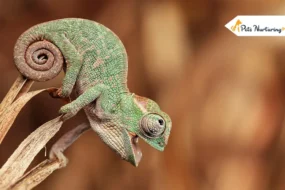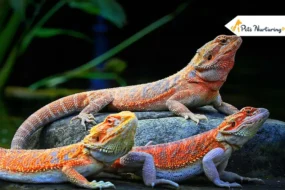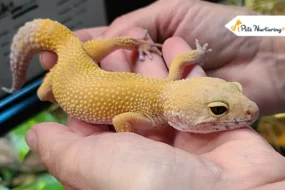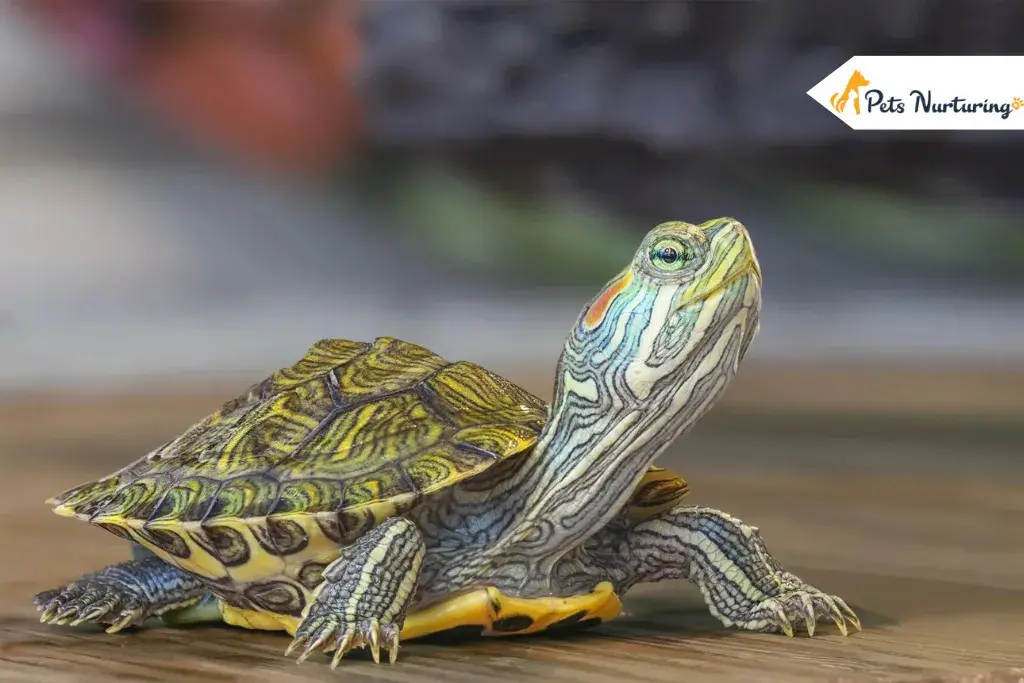
These days people are allowed to have various animals as pets. From tigers and lions to crocodiles and hawks, you can keep any type of exotic animal and bird as pets. However, if you want to have a simple and calm pet, the turtle is a great option! Currently, there are over 350 species of turtles living on land, and one of them is a yellow belly turtle! Yes, these cute little fellas are one of the most popular pets in America. That’s because this species of turtle is commonly found in the eastern United States!
If you’ve ever been around the east coast, there are high chances that you’ve already seen one!
These turtles are pretty easily recognizable with their striking yellow and black colors. They’ve high activity levels and a unique aquatic lifestyle which makes them not only a great pet but also stand them out from the other aquarium pets.
Also known as the yellow bellied turtle, or yellow belly terrapin, they’re subspecies of the pond turtle and are native to parts of the United States. Other ones are the red-eared slider and the Cumberland slider.Are you planning to buy an aquarium pet? Or just wanted to know more about the yellow belly turtle? Keep reading on!
Today in this blog, we’ll provide every bit of information about the yellow bellied slider. Compared to other map turtles, this one is great for beginners as its size is small. So if you’re kid wants a cute display pet, get this turtle!
In this post; you’ll learn
- Yellow Belly Turtle Overview
- Interesting Facts
- Yellow Belly Turtle : Habitat
- Yellow Belly Turtle : Physical Appearance & Colors
- Yellow Belly Turtle : Behavior and Temperament
- Yellow Belly Turtle : Housing
- Yellow Belly Turtle : Diet
- Yellow Belly Turtle : Common Health Problems
- Are Yellow-Bellied Sliders Good Pets?
- An overview of yellow-bellied sliders.
- Where do they live?
- How to identify a yellow belly turtle?
- The behavior and temperament of these turtles
- What kind of housing requirements do they need?
- What do they eat?
- Do these turtles shave any health issues?
- Are they good pets?
So, let’s start with the overview of the yellow turtle:
Yellow Belly Turtle Overview
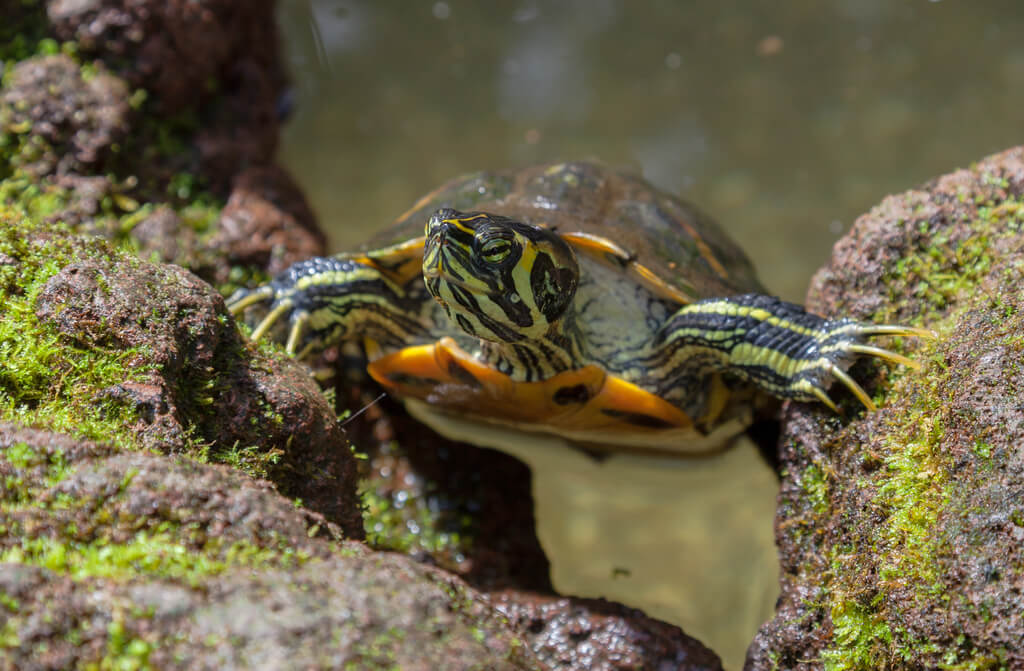
Yellow-bellied sliders or Trachemys Scripta Scripta are freshwater turtles with yellow tummies and a yellowish-green or brown body. You can find them all over the US, specifically in the nation’s southeastern region. They’re commonly found in states including Florida, Virginia, Georgia, South Carolina, North Carolina, and Alabama.
These turtles are actually part of the Emydidae family. The upper shells of the yellow turtle are between 5 and 8 inches in length. The bottom part of the shell or stomach area is dark with circular smears.
The wild turtles love to live in marshes, ponds, creeks, ditches, and lakes.
Interesting Facts

Do you want to know how the yellow belly slider got this name?
They get their name ‘slider’ from their habit of ‘sliding.’ Yes, they quickly retreat from the land into the water if they feel scared or threatened.
Another interesting thing about these turtles is that as they grow up, they become more ‘vegetarian.’ with the increasing age, they eat less meat. Later, these turtle’s diet becomes up to 95% dependent on plants only.
Here’s the basic summary of the Yellow Bellied Slider:
Yellow Bellied Turtle Overview
Species Name: Yellow Bellied Slider
Scientific Name: Trachemys Scripta scripta
Family: Emydidae
Kingdom: Animalia
Phylum: Chordata
Genus: Trachemys
Class: Reptilia
Order: Testudines
Common Names: Yellow-bellied slider, yellow-bellied terrapin, YBS
Size: Up to 9 inches for males and 13 inches for females
Temperature: 75–80-degree Fahrenheit (water)
Color: Brown or black with yellow stripes, a yellow body
Temperament: Curious and friendly
Marks: Brown or greenish-black shells with yellow stripes on their shells with a yellow underbelly (plastron/lower shell) with black spots.
Lifespan: 30 to 40 years
Diet: Omnivorous, high protein
Habitat: Freshwater habitats such as lakes, ponds, streams, and rivers
Location: North America, more commonly found in the Southeastern US (Florida and Virginia)
Minimum Tank Size: 100 gallons
Water Conditions: Clean, un-chlorinated water, no tap water
Care Level: Easy/ beginner level
Tank Mate Compatibility: High fishes that are small and fast
Now let’s know more about these cute display pets in detail.
Yellow Belly Turtle : Habitat
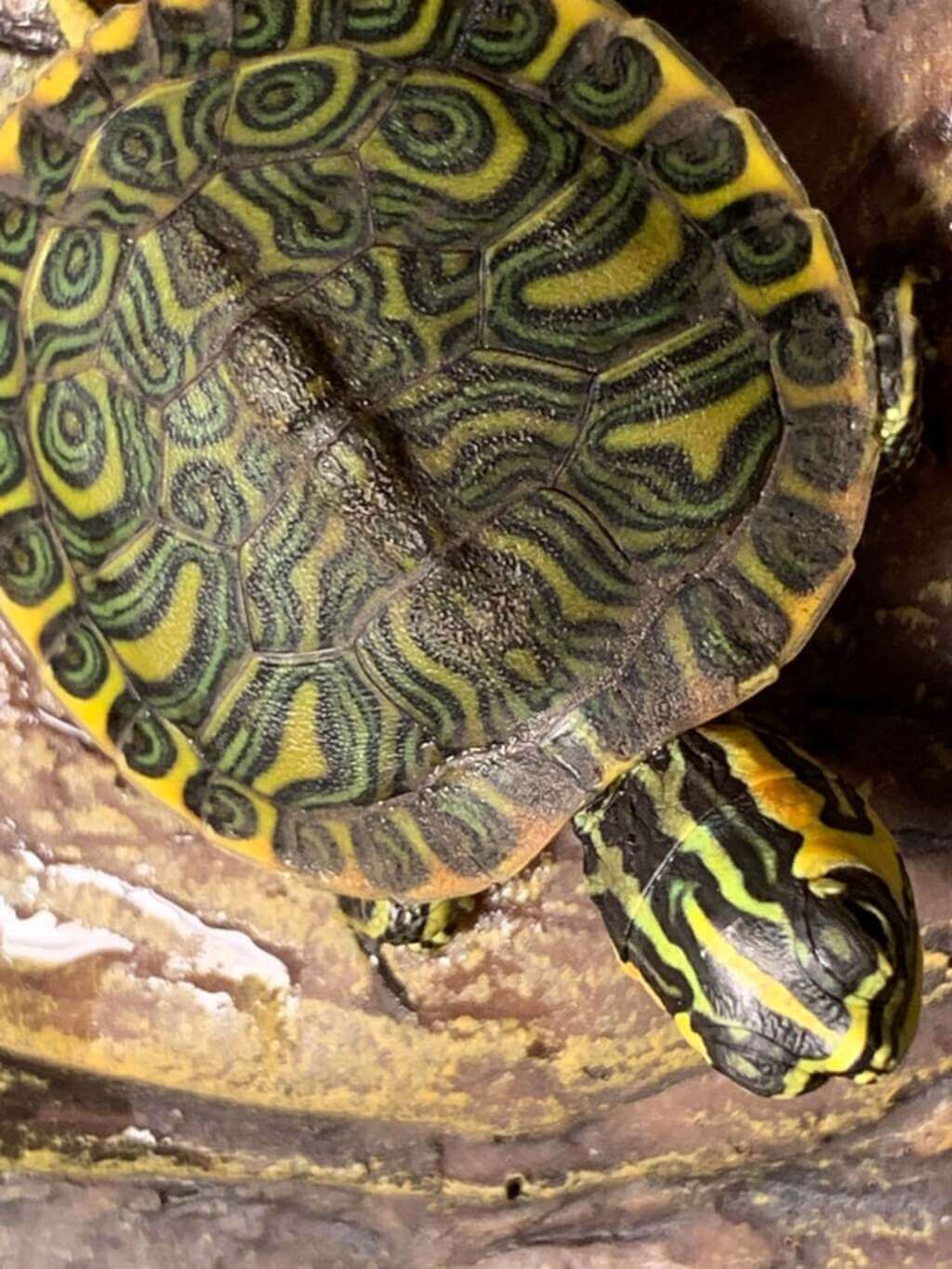
The first question that comes to mind for many people is what’s the native habitat of the yellow turtles? Where are they actually from?
These turtles just love the water, and that’s why they mostly prefer still water bodies like ponds. You can find them in slow-moving rivers, marshes, floodplain swamps, etc. Sometimes, they also come outside to bask in the sun. Its a pet tortoise that you can get to home.
And as per the geographic distribution, we’ve already told you that they’re native to North America. These turtles colonize seasonal wetlands such as Carolina bays. They always choose to live where the floating vegetation is abundant.
Yellow Belly Turtle : Physical Appearance & Colors

These adorable turtles are known for their unusual and unique appearance. They have olive green colored shells with distinct yellow stripes and a yellow underbelly (plastron) with black spots.
They’ve got the name because of the look of its plastron (the bottom part of the shell). This part is bright yellow and has some black spots.
On the other side, the upper or top part of the shell, which is known as the carapace, is a bit more subdued. This means it is dark brown or black as compared to the bottom. But the vibrant yellow markings create beautiful patterns that add some visual interest.
Have you ever noticed the feet of turtles?
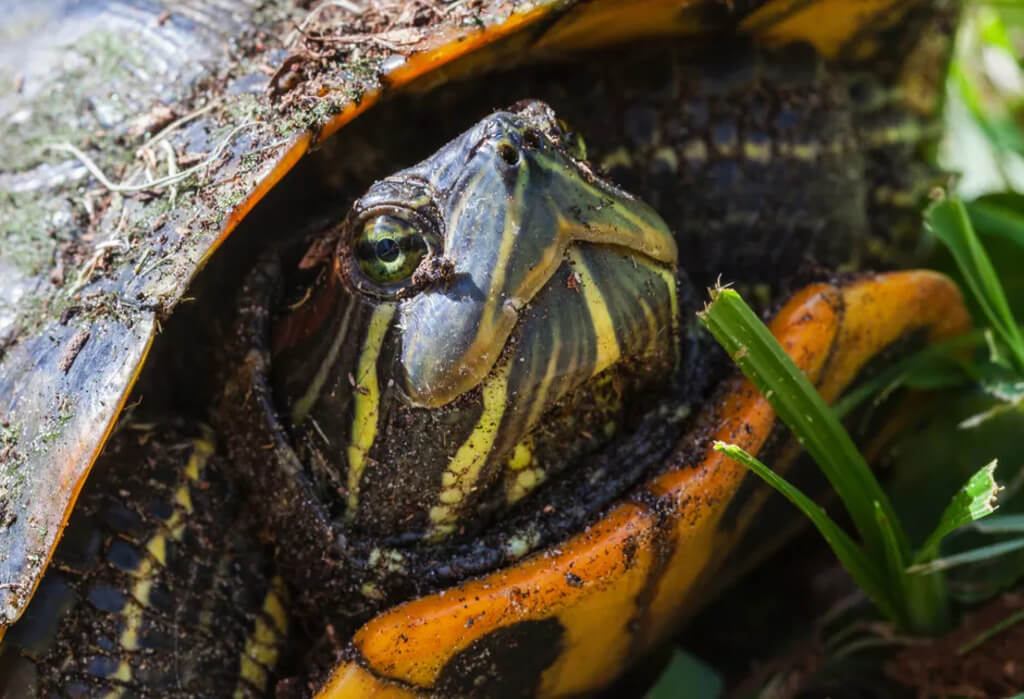
Notice it now, as these ones have pretty interesting feet. These feet have long claws that also reflect their amphibious nature. These long claws help them to grip the soil when they want to come on land. Each toe of their feet is webbed, making them graceful swimmers in the water!
Size
| Adult male | 5 to 9 inches (13 to 23 cm) in length |
| Adult female | 8 to 13 inches (20 to 33 cm) |
Weight
- On average, they weigh between 7.7 and 13.8 g.
Yellow Belly Turtle : Behavior and Temperament
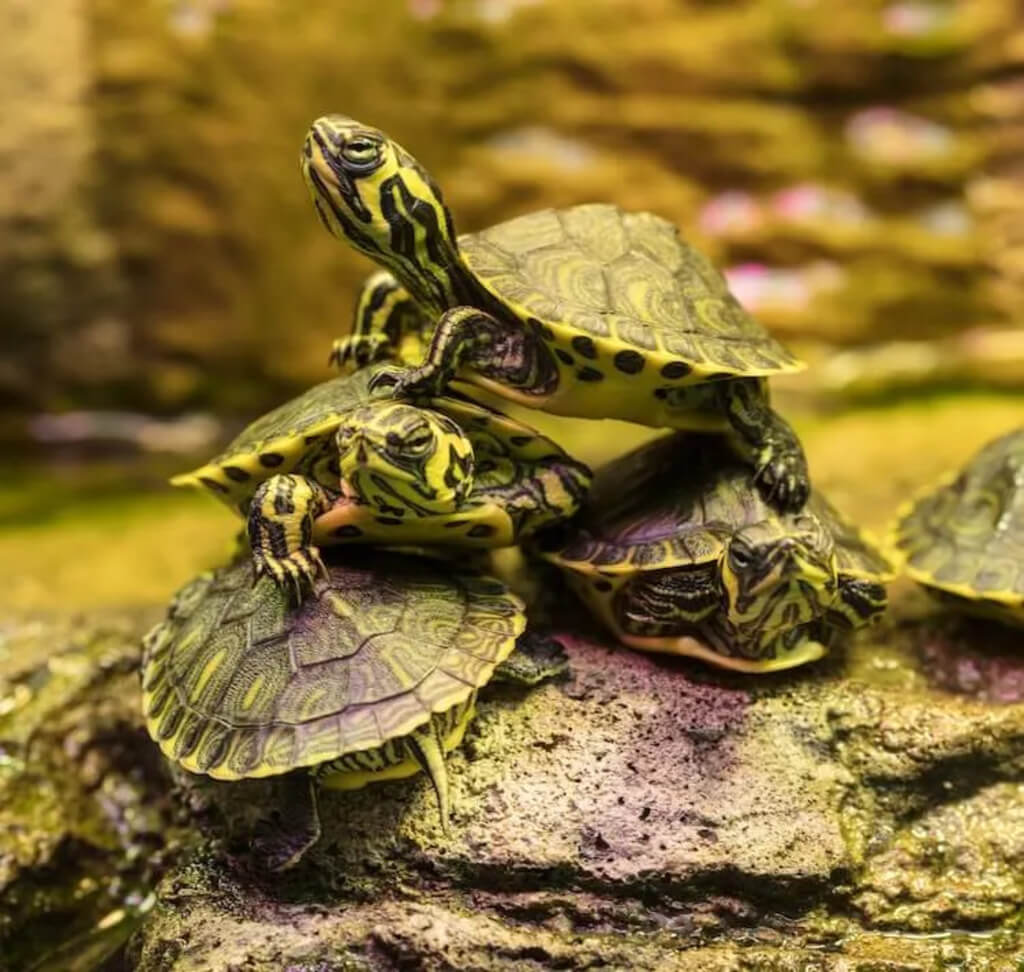
Yellow belly turtles are diurnal!
This means they’re almost like humans. In simple words, these captive turtles are most active during the day. They prefer to eat in the early morning, and later they spend the rest of the day resting on logs or basking in the sun or swimming or diving around the water. You may often see a group of these turtles around the best basking spots.
These turtles are territorial and prefer to live alone as pets most of the time. But these reptiles are entertaining pets if cared for properly. To raise their body temperature or put it constantly, these turtles can frequently move in and out of the water.
The wild turtles usually hibernate during the cold winter months, but those who are captive are active year-round because the temperature is constant in the tank.
Yellow Belly Turtle : Housing
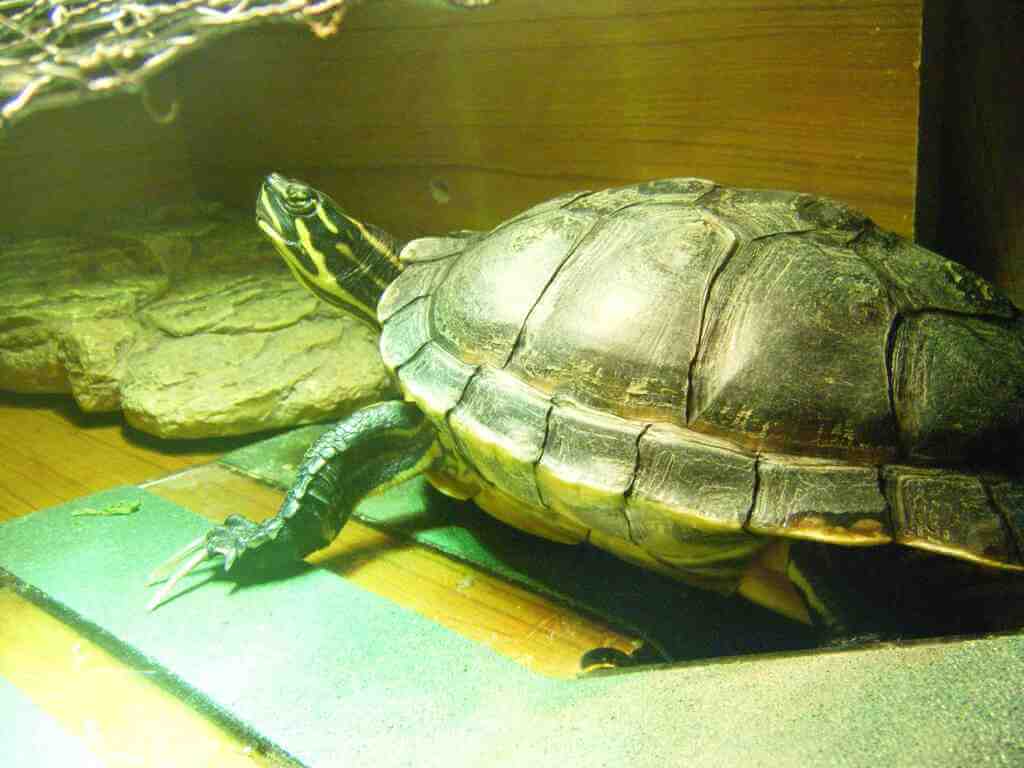
Don’t worry much about yellow belly turtle housing, as they’re pretty easy to keep. Your pet will remain healthy and happy just with the simple and proper setup and equipment.
Both tanks and aquariums are good for young sliders, but you’ve to keep the tank size in mind as they start growing. So what’s the ideal size, and what are the ideal tank conditions for turtles? Let’s know here.
Enclosure Size
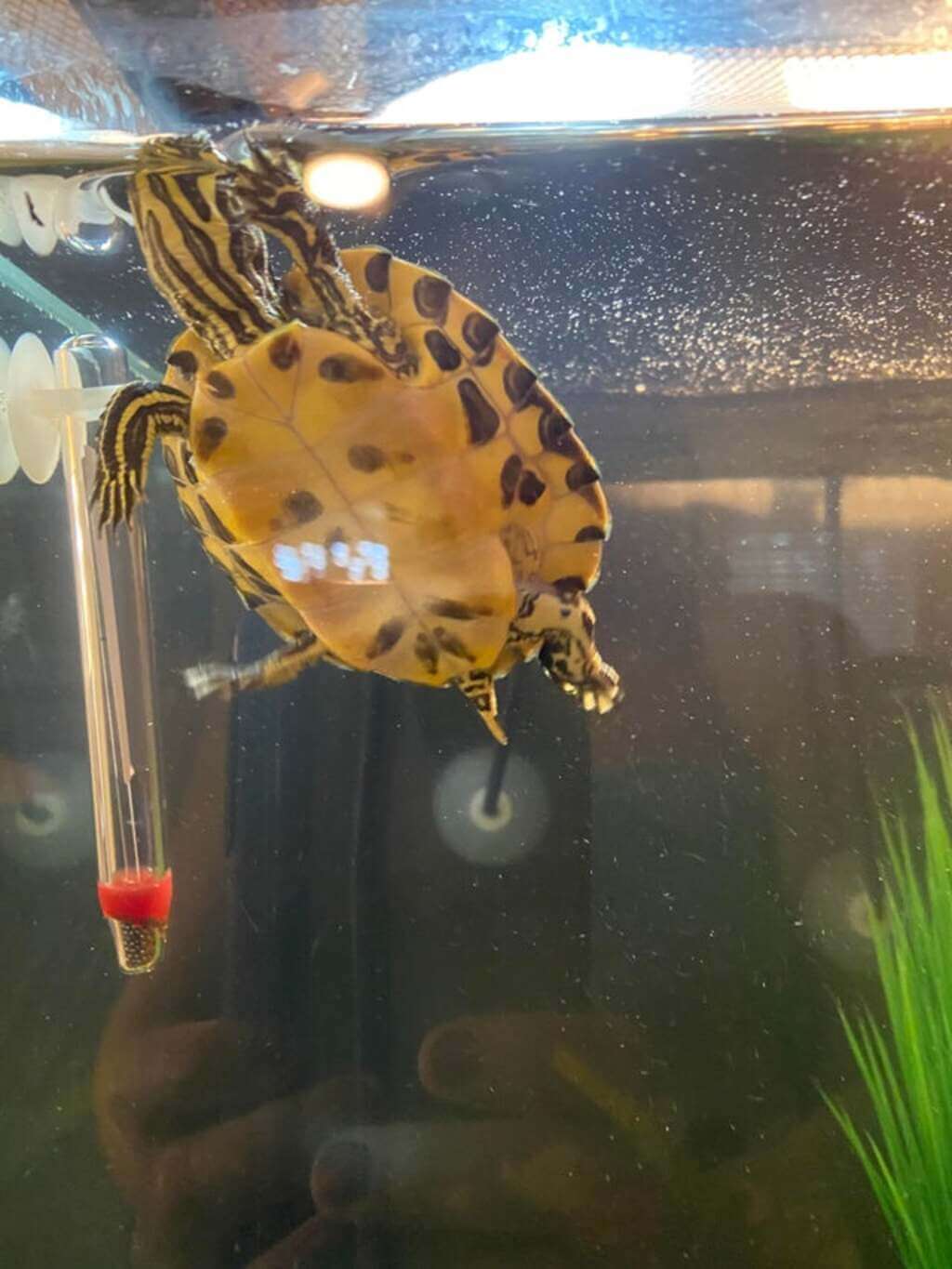
You’ll need a 30-gallon tank for young or baby turtles. For the adult slider, get the tank with a 75 to 100-gallon capacity. Make sure that the tank is deep enough to submerge your pet. Many owners also use a glass fish tank and plastic pond liners. Put plenty of plants along the bottom and add a basking dock with clean water for your turtle.
Water
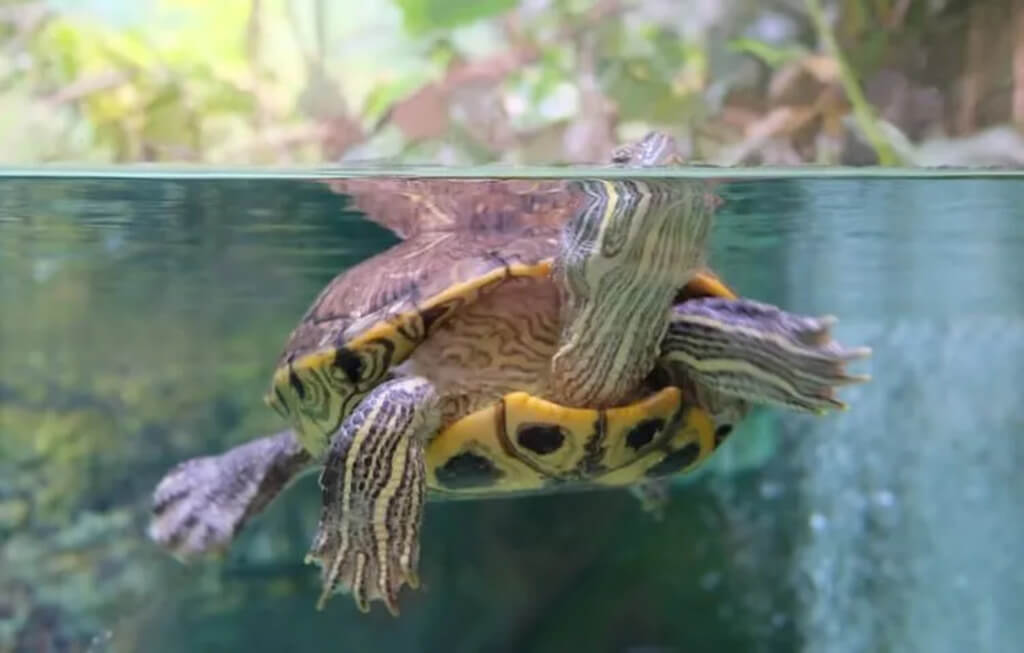
Always treat the water with a turtle-safe dechlorinator. This water conditioner will remove chlorine and other harsh water pollutants. Apart from this, you also have to install a tank filter like canister filters or submersible biological filters. The dirty water can cause your pet to develop various health issues.
Water should be kept at 72 to 80°F with an underwater heater. To make Brackish water for the yellow eared slider, go with a 50/50 mix of fresh and saltwater (around 1.01 SG).
Light & Heat
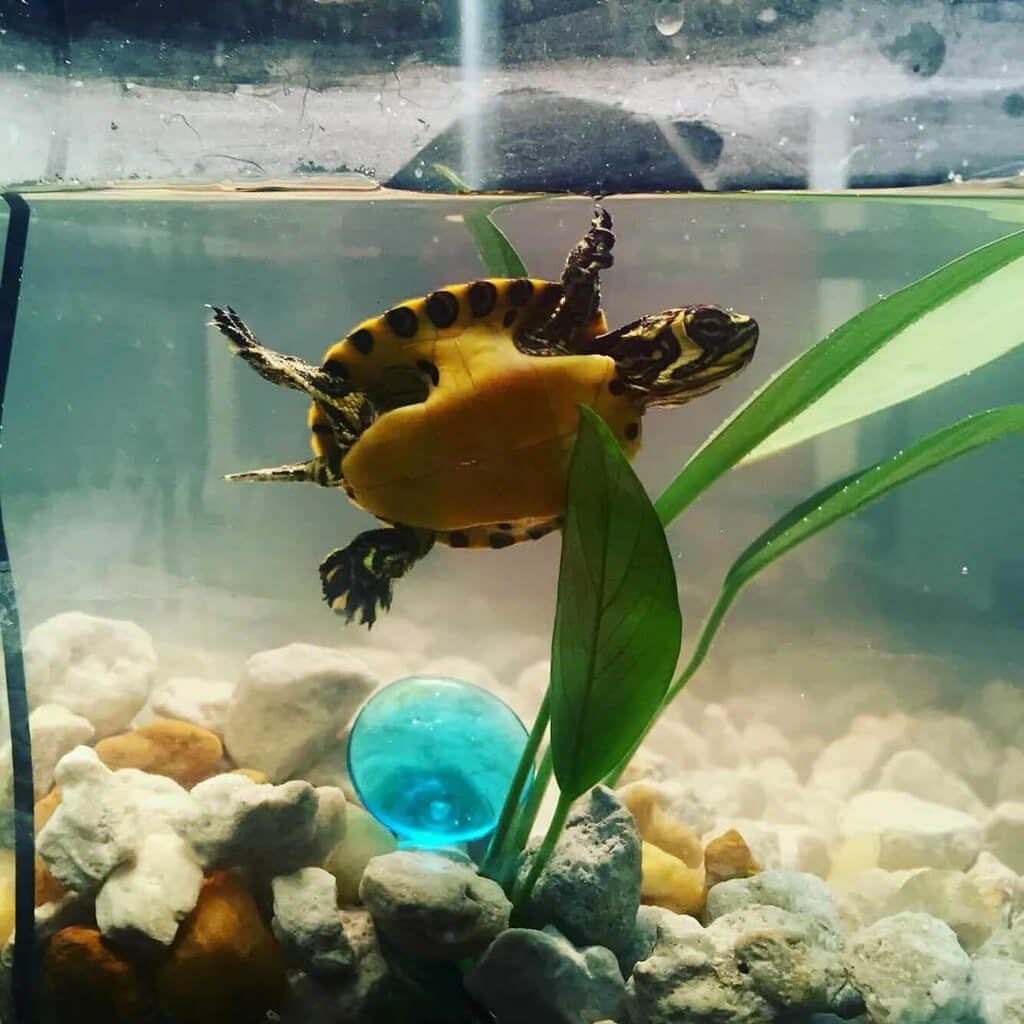
The yellow-Bellied slider needs proper UVA and UVB rays. These rays can be obtained from unfiltered sunlight or a special lamp. For the heat, you should make a basking spot on land that reaches 90 to 100°F. And on the other side of the tank, make a cooler area of 72 to 76°F.
Yellow Belly Turtle : Diet
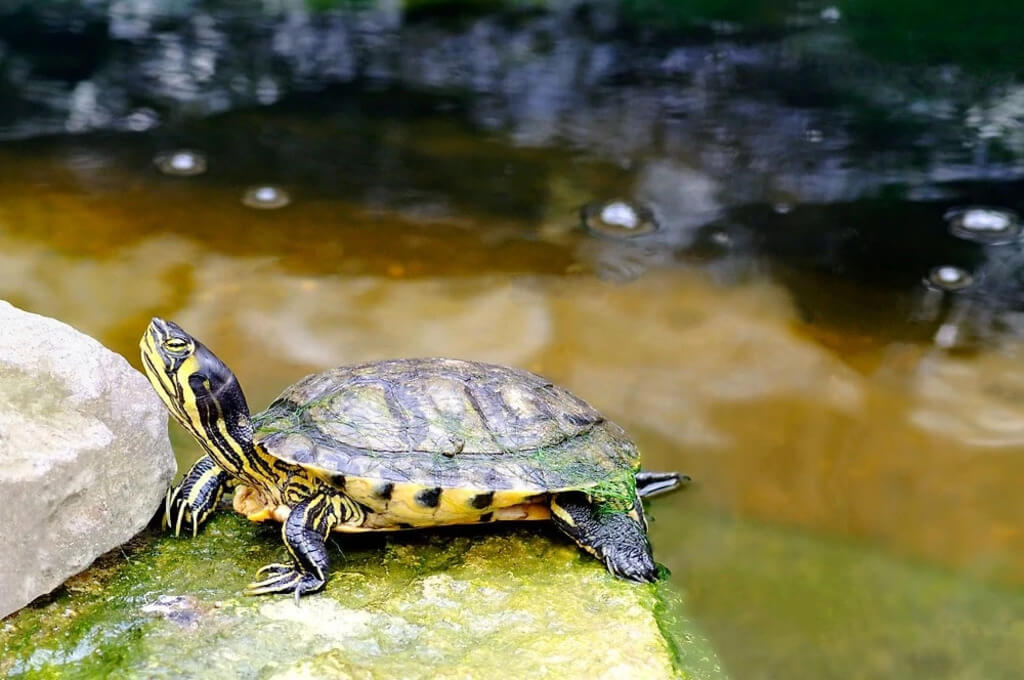
What do yellow-bellied slider turtles eat?
These creatures are omnivorous and always feed on both plants and animals, including dead fish, tadpoles, aquatic crustaceans, and other meat items. They also like to eat fruits, leaves, seeds, stems, roots, and algae in the wild.
The wild baby turtles feed on spiders, fish, insects, and carrion. But in captivity, you can give them small crickets, mealworms, and cockroaches. Apart from this, you can also feed them dandelion greens, Romaine lettuce, and other vegetables.
Now let’s see what you can give to a yellow turtle and what not to give. Here is the list of all the food items:
Good Foods
- Fresh parsley
- Carrot Tops
- Green Beans
- Duckweed
- Kale
- Turnip Greens
- Apples
- Water Lilies
- Collard Greens
- Red Bell Pepper
- Waterweed (Elodea)
Bad Foods
- Raw Meat
- Iceberg Lettuce
- Beets
- Rhubarb Greens
- Feeder Fish
- Potato Greens
- Spinach
So, yellow-bellied turtles fear animals?
In captivity but in the wild, their enemies are raccoons, Virginia opossums, striped skunks, and red foxes.
Yellow Belly Turtle : Common Health Problems
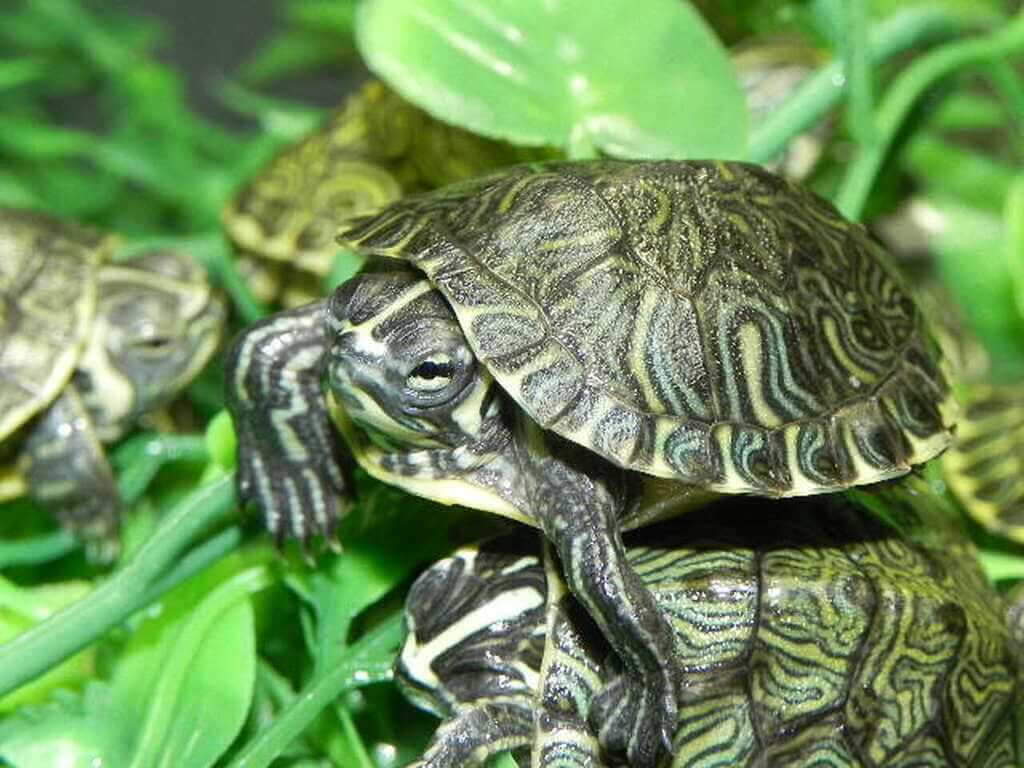
Do you know that some turtles can live upto 150-200 years? Yes, that’s true, but not the yellow belly turtle!
The average lifespan of yellow-bellied sliders is between 20 and 30 years. But some of them can live upto 40 years.
Yes, there are also some potential health problems that your pet can suffer from. To determine this, first, you’ve to check the symptoms.
For example, if they are
- Strong and actively swimming around.
- Eating lots of food
- Even-colored shells with no abrasions.
All the above symptoms mean that they’re completely healthy and fine!
However, if they’re behaving abnormally and have
- Closed or puffy eyes
- Red and white patches on the shell.
- Or they’re just floating at the top of the water, inability to dive.
This all means that they’re suffering from a disease, and you should immediately contact the nearest vet.
Are Yellow-Bellied Sliders Good Pets?
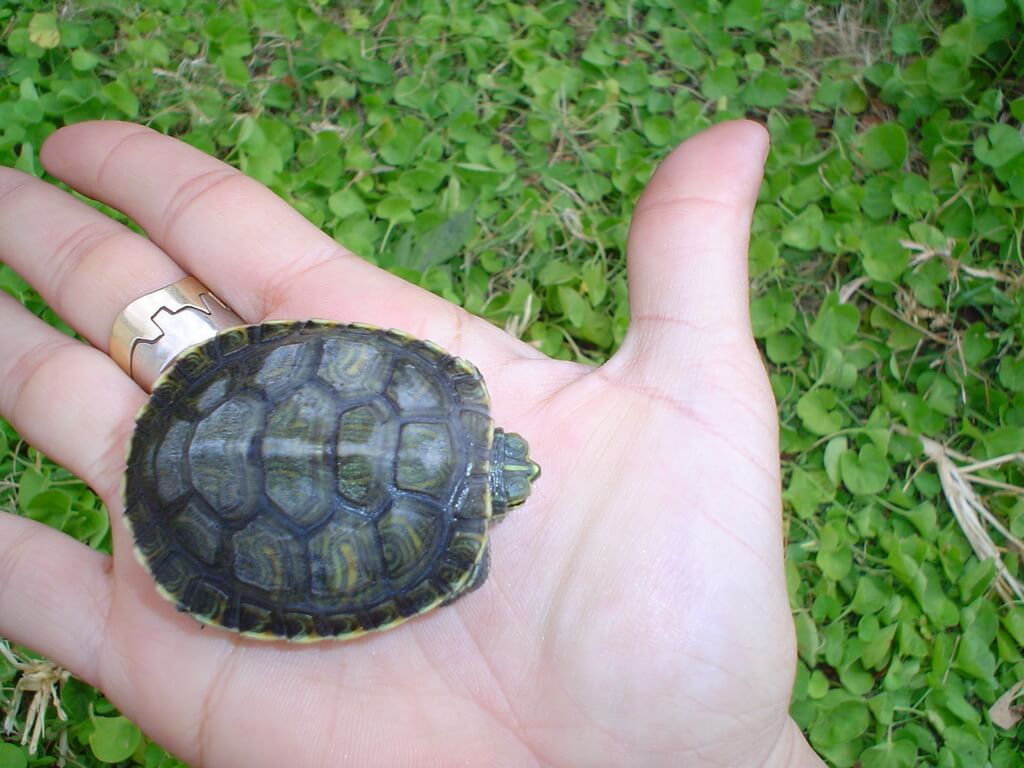
Yes, they’re good and great pets. These little turtles are full of energy, look pretty good, and have calm behavior. They’re most active during the morning and prefer to take a rest later.
However, before you buy or adopt a yellow belly turtle, you should also consider various things like their food and housing. These turtles need a lot of tank space and clean water. Apart from the 100-gallon tank, you also have to buy other equipment like a pump, an aquarium filter, and a heater.
So this is all about the yellow belly turtle. I hope this in-depth yellow-bellied slide care guide gives you all the required information. If you like this guide and find it helpful, share this blog with your friends and family.
Keep reading:








